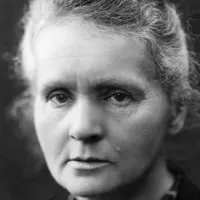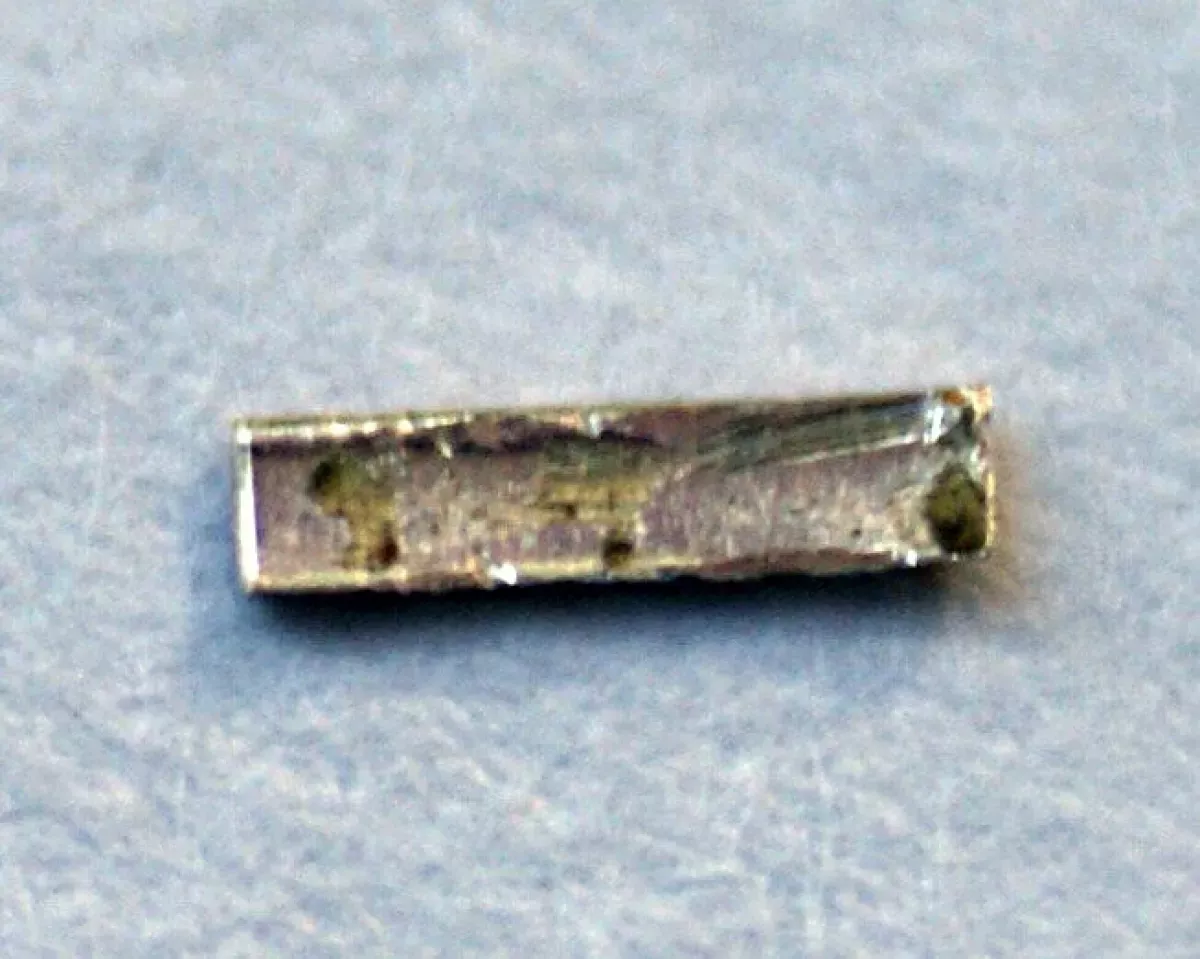Radium, a chemical element with symbol Ra and atomic number 88, belongs to the alkaline earth metals. It appears silvery-white in its pure form but reacts with nitrogen in the air to create a black radium nitride layer. All radium isotopes are radioactive, with radium-226 being the most stable, having a half-life of 1,600 years. Upon decay, radium emits ionizing radiation, causing radioluminescence, a property that led to its use in self-luminous paints. However, radium is highly toxic and carcinogenic due to its and its decay product radon's radioactivity. It also has a tendency to accumulate in bones.
1900: Discovery of Radium Dermatitis and Early Medical Applications
In 1900, the first case of "radium-dermatitis" was documented, along with the observation that radium could damage both healthy and cancerous tissues, leading to its consideration for cancer treatment.
1904: Austrian Government Nationalizes Radium Mines
Following the Curies' discovery, several scientists began isolating radium, and small companies extracted it from Jáchymov mine tailings. However, in 1904, the Austrian government nationalized the mines and stopped exporting raw ore.
1904: Radium Used in Biological Research
In 1904, biologists began using radium to induce mutations and study genetics, with researchers like Daniel MacDougal exploring its potential to cause large mutations and Thomas Hunt Morgan using it to induce changes in fruit flies.
September 1910: Isolation of Radium Metal
In September 1910, Marie Curie and André-Louis Debierne isolated radium as a pure metal through electrolysis of radium chloride using a mercury cathode. Later that year, E. Ebler also isolated radium metal through the thermal decomposition of radium azide.
1910: Isolation of Radium Metal
In 1910, Marie Curie and André-Louis Debierne successfully isolated radium in its pure metallic state through the electrolysis of radium chloride.
1912: Increased Radium Production
Until 1912, radium availability remained low, following which production increased.
1913: United States Becomes Leading Radium Producer
In the early 1910s, the United States emerged as the leading radium producer, with Pittsburgh producing 70 grams from 1913 to 1920.
1920: United States as leading radium producer
By 1920, the United States became the leading producer of radium.
1925: Improved Safety Measures for Radium Dial Painters
Following a lawsuit and studies on the adverse effects of radioactivity, safety measures for radium dial painters were improved from 1925 onward, including instructions, protective gear, and leading to a decline in injuries.
1928: International Radium Protection Recommendations
In 1928, the first international recommendations for protection against radium and radiation were established by the British X-ray and Radium Protection Committee and adopted by the International Commission on Radiological Protection.
1940: Use of Radium in Nasopharyngeal Irradiation
From the 1940s to the 1960s in the U.S., radium was used in nasopharyngeal radium irradiation to treat hearing loss and barotrauma in children, airmen, and submarine crews.
1940: Industrial Radium Extraction
In 1940, the Curies' process was still being used for industrial radium extraction, but mixed bromides were used for fractionation.
1954: Worldwide Radium Supply
By 1954, the total purified radium supply worldwide reached about 2.3 kg.
1984: Decline in Radium Production
Annual production of radium compounds dropped to around 100g as of 1984.
1985: Establishment of Korea Radioisotope Institute
In 1985, the Korea Radioisotope Institute was established to regulate radiation safety standards in South Korea
1990: Establishment of Korea Institute of Nuclear Safety
In 1990, the Korea Institute of Nuclear Safety was founded to manage radiation safety standards in South Korea.
2004: Radium-Beryllium Neutron Sources
Up until at least 2004, radium-beryllium combinations served as neutron sources, although other materials like polonium and americium were becoming more prevalent.
2007: Industrial Use of Radium
As of 2007, radium was still being utilized in some industrial radiography devices as a radiation source for detecting flaws in metal parts, similar to X-ray imaging.
2010: Boiling Point of Radium
The boiling point of radium is 2010 K.
2011: Radium Extraction from Spent Nuclear Fuel
As of 2011, radium extraction shifted to spent nuclear fuel as the primary source.
2011: Safer Alternatives Replace Radium in Medical Treatments
As of 2011, safer gamma emitters such as cobalt-60 have generally replaced radium in medical treatments due to their lower cost, greater availability, and reduced health risks, although factors such as rising cobalt costs have caused an increase in the use of linear accelerators.
2011: Radium Isotope in Actinium Production
In 2011, the primary use of the radium isotope Ra-226 was in the production of actinium (Ac) through neutron irradiation within a nuclear reactor.
2013: Radium-223 Approved for Cancer Treatment
In 2013, the US FDA approved radium-223 (Ra-223) for treating bone metastasis in cancer patients.
2018: Further Decline in Annual Radium Production
Annual radium production declined to less than 100 g by 2018.
2018: Limited Commercial Applications of Radium
As of 2018, radium has no commercial applications outside of nuclear medicine, having been replaced by safer radioisotopes in most applications.
2018: Discontinuation of Radium Paint
From the 1960s onward, radium paint was discontinued and replaced with safer alternatives such as promethium-147 or tritium for long-lasting luminosity in the dark, and non-radioactive fluorescent materials.
2022: IAEA Management of Disused Radium Sources
Starting in 2022, the International Atomic Energy Agency (IAEA) initiated efforts to manage and recycle disused radium sources from old radiotherapy devices to reduce potential hazards.
Mentioned in this timeline

A submarine is a watercraft capable of independent operation underwater...

Marie Curie born Maria Sk odowska in Poland was a...
Korea is a peninsular region in East Asia comprised of...
South Korea officially the Republic of Korea occupies the southern...
Russia officially the Russian Federation is a transcontinental country spanning...

Pittsburgh is a city in southwestern Pennsylvania situated at the...
Trending

7 months ago Fred Warner becomes NFL's highest-paid linebacker with 49ers contract extension.
Marlon Humphrey is a professional football cornerback for the Baltimore Ravens in the NFL He played high school football at...
29 days ago Todd and Julie Chrisley Home After Trump Pardons End Prison Sentence.

1 month ago LaFleur Anticipates Aggressive Lions, Addresses Campbell Rivalry & Hutchinson Challenge For Packers

8 months ago Josh Jacobs infuriated by Raiders' Chiefs logo dance; former player recalls backfire.
1 month ago SpaceX Falcon 9 Launches Starlink Satellites from Cape Canaveral on 150th Mission.
Popular

XXXTentacion born Jahseh Dwayne Ricardo Onfroy was a controversial yet...

Stranger Things created by the Duffer Brothers is a popular...

Candace Owens is an American conservative political commentator and author...
The Kennedy Center Honors are annual awards recognizing individuals and...

Ben Shapiro is a prominent American conservative political commentator media...

William Franklin Graham III commonly known as Franklin Graham is...
